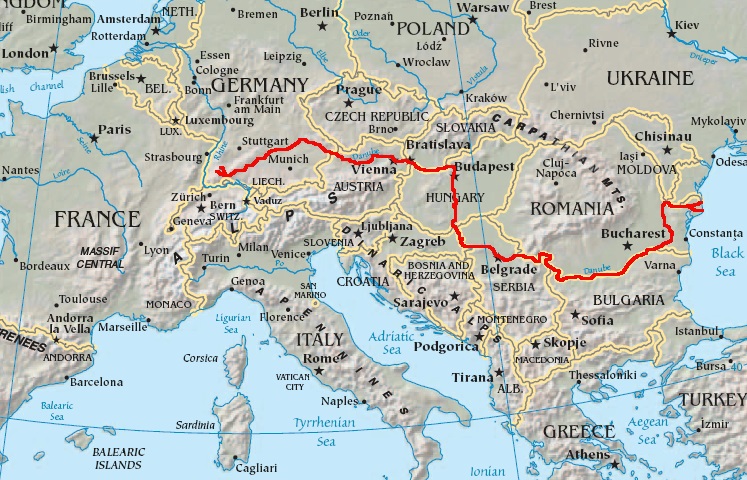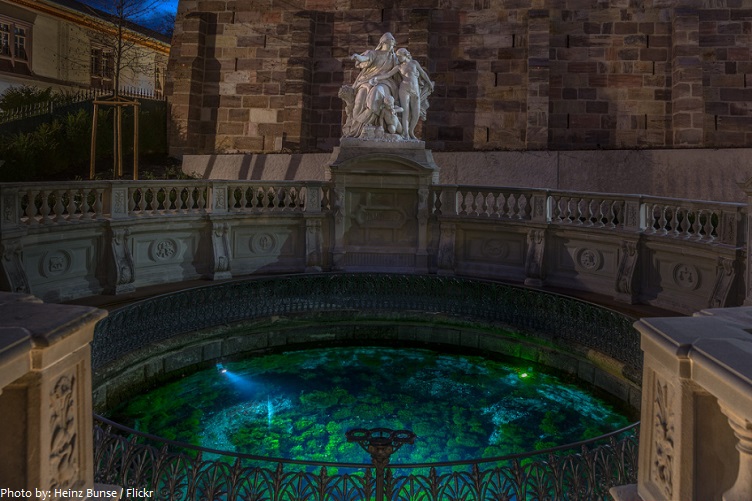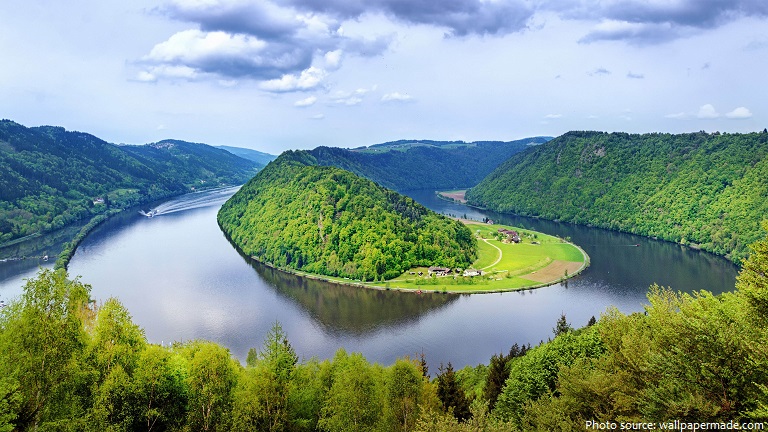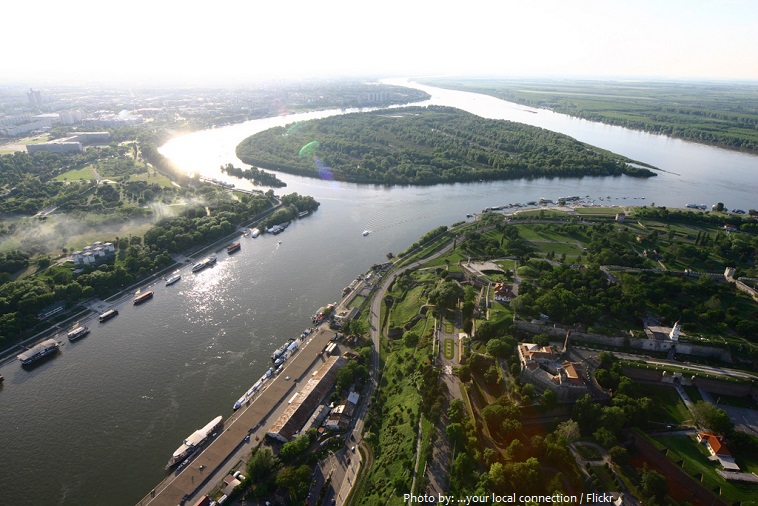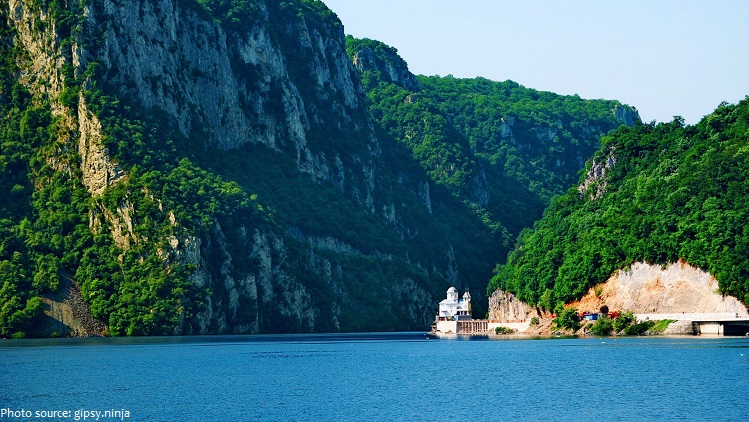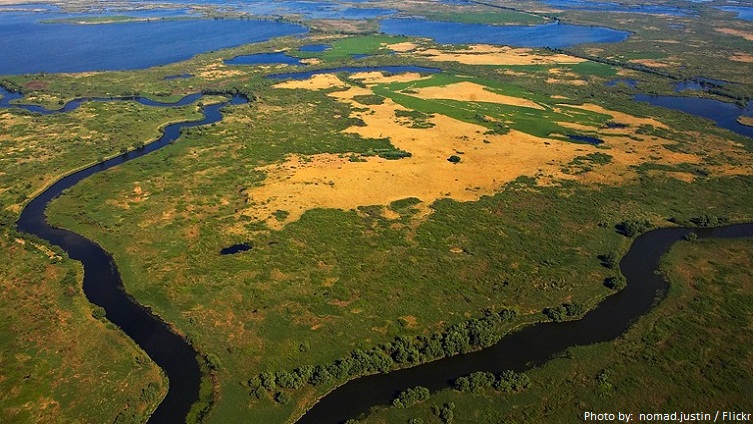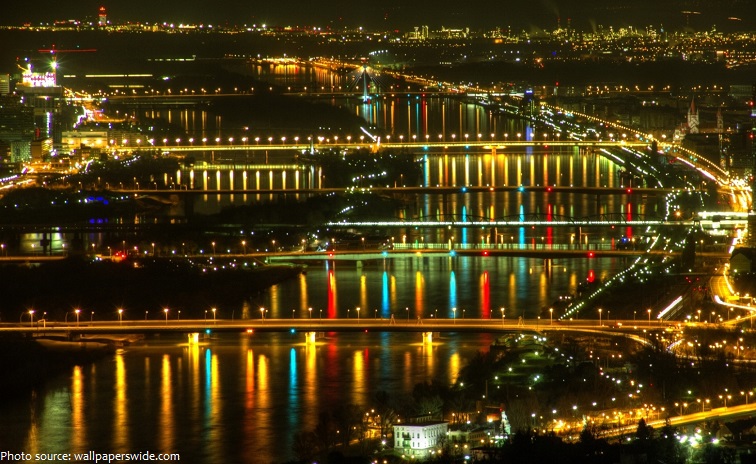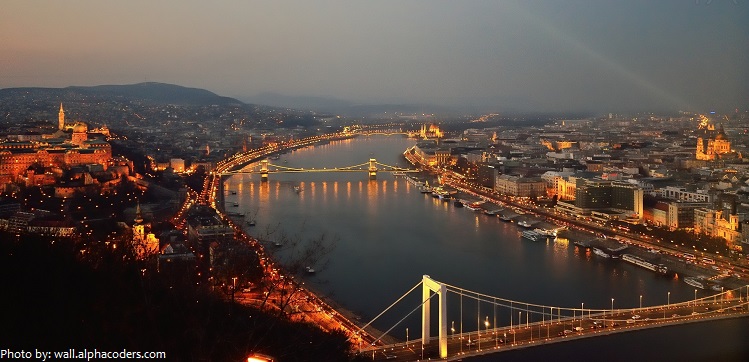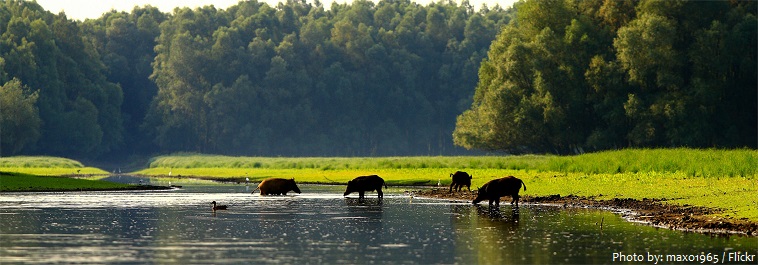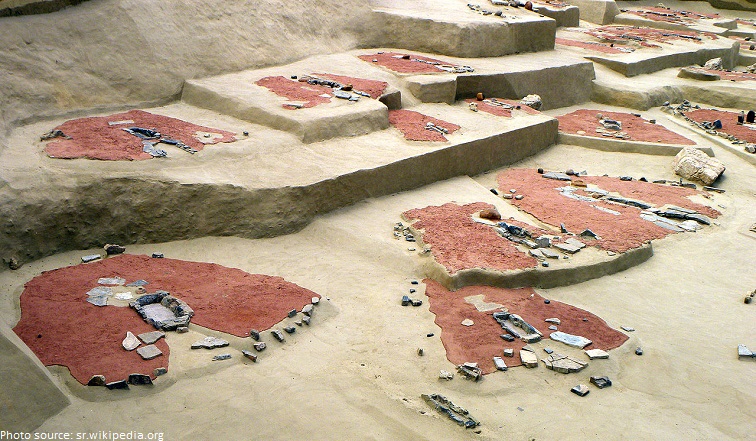The Danube is one of the world’s greatest rivers. It is the second longest river in Europe after the Volga River, and also the longest river in the European Union region.
It is located in Central and Eastern Europe.
The Danube flows through 10 countries.
Originating in Germany, the Danube flows southeast for 2,860 kilometers (1,780 miles), passing through or touching the border of Austria, Slovakia, Hungary, Croatia, Serbia, Romania, Bulgaria, Moldova and Ukraine before emptying into the Black Sea.
The Danube is conventionally taken to be formed by the confluence of the two streams Brigach and Breg just east of Donaueschingen (German town in the Black Forest).
Right next to the Prince of Fürstenberg’s palace, the source of one of the world’s most romantic rivers has been enclosed in an elegant stone basin in the palace grounds. A sculpture shows “Mother Baar” holding a child (the young Danube) on her lap.
During its course, the Danube River runs through cities, valleys, and deep, wide gorges.
The Danube River’s drainage basin is 817,000 square kilometers (315,445 square miles) in size. 19 countries share the Danube River Basin, which makes it the world’s most international river basin.
The average discharge is 7,000 cubic meters (247,203 cubic feet) per second.
Its immense volume of water makes the Danube one of Central Europe’s most vital sources of fresh drinking water. Approximately 20 million people rely of the Danube River for their drinking water.
The river gathers the waters of more than 300 tributaries. Ordered from source to mouth, the main tributaries are: Iller, Lech, Regen, Isar, Inn, Enns, Morava, Leitha, Váh, Hron, Ipel, Sió, Drava, Vuka, Tisza, Sava, Tamiš, Velika Morava, Karaš, Jiu, Iskar, Olt, Vedea, Argeş, Ialomiţa, Siret, Prut. [Photo: Confluence of Sava and Danube rivers in Belgrade]
The Iron Gate is the longest and largest gorge in Europe and on the Danube River. It is long about 130 kilometers (80 miles). It forms part of the border between Romania and Serbia, on the north is Romania and on south Serbia.
The Danube Delta is the second largest river delta in Europe, after the Volga Delta, and is the best preserved on the continent. The greater part of the Danube Delta lies in Romania, while its northern part, on the left bank of the Chilia arm, is situated in Ukraine. Its approximate surface area is 4,152 square kilometers (1,603 square miles), of which 3,446 square kilometers (1,331 square miles) is in Romania.In 1991, the Romanian part of the Danube Delta became part of UNESCO’s list of World Heritage Sites.
Just before the Danube pours into the Black Sea, it splits into three branches, the Chilia, Sulina, and Sfântu Gheorghe.
The Danube River flows directly through many significant European cities, including four national capitals – Vienna [photo below] (Austria), Bratislava (Slovakia), Budapest (Hungary) and Belgrade (Serbia).
UNESCO World Heritage Sites in the Danube River Region:
• Austria: Historic Centre of Salzburg; Schönbrunn Palace; Wachau Cultural Landscape; Historic Centre of Vienna
• Czech Republic: Historic Centre of Cesky Krumlov; Historic Centre of Prague
• Germany: Old Town of Regensburg
• Hungary: Budapest / Danube Banks [photo below]; Early Christian Necropolis of Pécs (Sopianae)
• Romania: Danube Delta; Villages with Fortified Churches in Transylvania
National parks along the Danube’s shores include:
• Naturpark Obere Donau (Germany)
• Nature protection area Donauleiten (Germany)
• National park Donau Auen (Austria)
• National park Duna-Ipoly Nemzeti Park (Hungary)
• Natural park Kopački Rit [photo below] (Croatia)
• Đerdap National park (Serbia)
• Iron Gate natural park (Romania)
• Biosphere reserve Danube Delta (Romania)
The Danube is of great economic importance to the 10 countries that border it – all of which variously use the river for freight transport, the generation of hydroelectricity, industrial and residential water supplies, irrigation, and fishing.
The archaeological site of Lepenski Vir is located on the banks of the Danube in eastern Serbia. It was the center of one of the most important prehistoric cultures. At the Lepenski Vir site, the remains of religious architecture dating from 6500 to 5500 BC have been found.
During the 7th century BC, Greek sailors reached the lower Danube and sailed upstream, conducting a brisk trade.
Under the Romans the Danube formed the border of the Empire with the tribes to the north almost from its source to its mouth.
The Danube is mentioned in the title of a famous waltz by Austrian composer Johann Strauss, An der schönen, blauen Donau (On the Beautiful Blue Danube). This piece is well known across the world and is also used widely as a lullaby.
A preferred route of travel by rulers since ancient times, the Danube has long been called “the river of kings.”
Napoleon referred to the Danube as the “Queen of Europe’s River”.
The Danube is a popular location for river cruises, attracting hundreds of thousands of visitors every year from European cities and overseas destinations.

